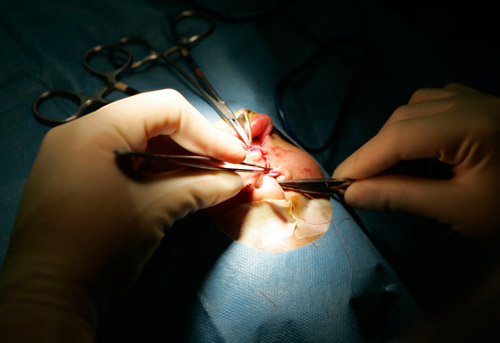The word cleft refers to a gap or a split between two separate objects. Some babies are born with a cleft palate or a cleft plate. This used to be a problem that was not treated and so an individual was stuck with a cleft lip for most of their life. A cleft lip usually gives the appearance of a split near an individual’s mouth or a sagging of the lips. An individual who has suffered from a cleft lip may talk different then other people. Now, with the advances of technology, a cleft palate can be fixed through different treatment and surgery options.

Harelip surgery
A cleft palate is also called a harelip. A cleft palate or cleft lip is considered to be a birth defect that affects the upper lip and the roof of the mouth of the baby. A cleft lip usually occurs when the tissue that is responsible for forming the roof of the mouth does not properly join with the upper lip before birth. A cleft lip and palate can appear as a small notch that has formed in the lip to a larger groove that runs from the roof of the mouth to the baby’s nose. A cleft lip and palate can affect the way a baby’s face appears. This can also lead to problems later in life with ear infections, talking and eating.
The treatment for a cleft lip is to have surgery performed on the lip and palate. The doctor will usually perform this surgery in several different stages. The baby will have their first surgery within a year of the baby’s birth. Children who suffered from a cleft palate at birth usually recover very well from the surgery and treatment.
A cleft lip is usually repaired by the time a baby is three to six months old. During cleft lip surgery the doctor closes the gap that has occurred in the lip and corrects the nostrils. A person who has had cleft lip surgery as a baby will have a small scar.
A cleft palate is repaired when the baby is nine to one year old. During this type of surgery the doctor closes the hole at the roof of the mouth and the nose. Then the doctor reconnects the muscles with the soft palate.

![Diseases, Symptoms, tcm, [tcmwindow.com]](/uploadFile/adImg/2015/11/11/f5cbfcc0-4df5-4646-9b9a-f316651a0199.jpg)





